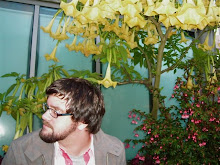 My 3 week honeymoon in Thailand was a real adventure - perhaps the most authentic "adventure" I've ever undertaken. My wife and I started in Bangkok on January 12. Her aunt, uncle and cousins - none of whom spoke much English - escorted us around the city for several days. We visited a wide variety of temples, markets and sites that catered both to Western tourists and native Thai people. It was a fun leg of the trip, rich in discovery of kind, humble people and vibrant colors, flavors and - for better or worse - smells - in the big city. Many of the places we visited were also filled with "farangs" (foreigners).
My 3 week honeymoon in Thailand was a real adventure - perhaps the most authentic "adventure" I've ever undertaken. My wife and I started in Bangkok on January 12. Her aunt, uncle and cousins - none of whom spoke much English - escorted us around the city for several days. We visited a wide variety of temples, markets and sites that catered both to Western tourists and native Thai people. It was a fun leg of the trip, rich in discovery of kind, humble people and vibrant colors, flavors and - for better or worse - smells - in the big city. Many of the places we visited were also filled with "farangs" (foreigners).By contrast, Na San is a small farming community of about 2,000 people located in the Southern Thai province of Surat Thani. The people of Na San, including several members of my wife's immediate and extended family, have been harvesting rubber and fruit trees in the region for several generations. Na San is my wife's birthplace, and it served a similar purpose for me as I came to learn, understand and love the Thai people and their work.
 Life in Na San seems to be simpler than life in the big city. The pace is more relaxed. While there are busy fresh markets, there are no knick-knack shops selling mass-produced elephant carvings or knock-off Ed Hardy t-shirts. Most of the narrow, one-story dwellings are tiled from one end to the other. A basic restroom includes a sink, a shower head attached to the wall and a modern toilet with a spray nozzle attached. Thai kitchens are similar to their Western counterparts, though most don't include microwaves, full ranges or dishwashers.
Life in Na San seems to be simpler than life in the big city. The pace is more relaxed. While there are busy fresh markets, there are no knick-knack shops selling mass-produced elephant carvings or knock-off Ed Hardy t-shirts. Most of the narrow, one-story dwellings are tiled from one end to the other. A basic restroom includes a sink, a shower head attached to the wall and a modern toilet with a spray nozzle attached. Thai kitchens are similar to their Western counterparts, though most don't include microwaves, full ranges or dishwashers.The economy of Na San - and much of the rest of the Surat Thani province - is based around agriculture. Rubber farms laid out in long, regular rows sandwich the highways throughout the area. Aside from meeting several members of my wife's family, watching and experiencing the rubber orchards first hand was the highlight of the trip for me. I commented over and over again about how I could have just sat and stared at the orchards all day. The thin trees shoot straight up toward the sky until a few branches bend together to form arches like natural cathedrals.
Many members of my wife's family (above left to right: a few of Niz's family members: sisters Pee Jeeip and Pee Lek and cousin Nong Boy) own rubber and fruit orchards, and they let me try my hand at harvesting the rubber. In fact, I was so excited to work the rubber orchard that I mistakenly got up at 5:30am one day awake and ready to work all morning. Later that day we all realized our language barrier had caused a misunderstanding, but I was ready to go.
Prior to visiting the orchard, I had believed that rubber trees were tapped with some sort of spigot, and that the rubber sap drained out of the tree with little effort. When I did finally get a chance to try for myself, I learned this was very wrong. The work is physical and takes a particular technique. It's usually done in the wee hours of the morning due to the heat too, so men and women both work odd hours several days each week.
The thin bark of the tree is scraped lightly at a diagonal angle down and across the tree. This frees the opaque white sap to slowly seep to the surface and run down into a ceramic bowl. Each bowl looks like it holds about a pint of rubber. The full bowls are then collected into a larger bucket and taken to a market to sell. While we were there, raw rubber was selling for about 90 baht (about $3) per kilo, which I was told was a pretty good price.
I was also told I did a pretty decent job scraping rubber bark, after I got the hang of the technique. My obsession with the trees led me to buy a simple tool used to scrape the wet rubber from the little bowls. I also attempted to buy one of the sharp bark scrapers, but wouldn't have been able to bring it back through security, so had to let that one go. When we go back again, I'm going to see if I can get on the payroll.
Next up: a look at some Thai craftsmanship. Hey, this is a furniture blog, after all!









1 comment:
Your writing and photographs are beautiful. I'm excited for the next installment.
Post a Comment